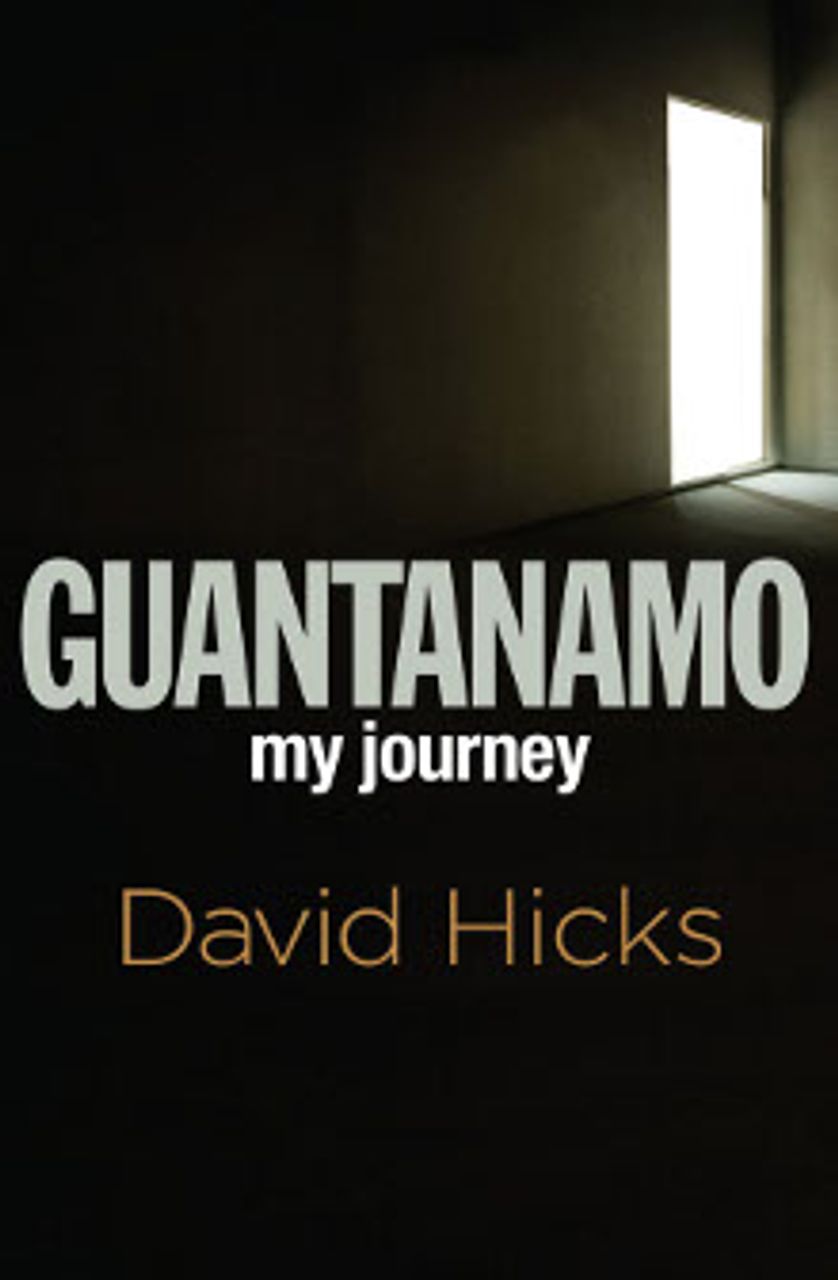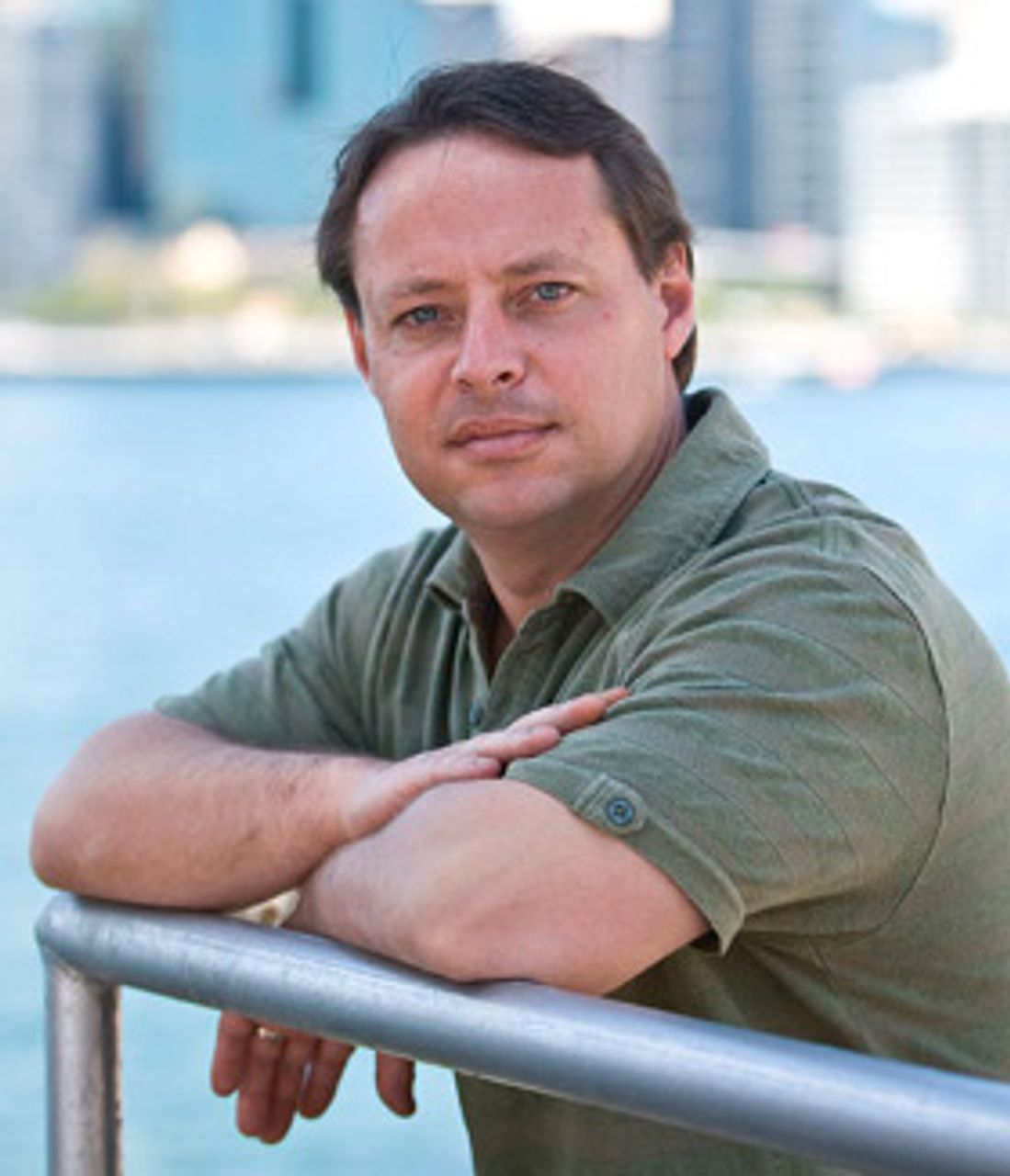
Last month’s publication by WikiLeaks of classified US military dossiers on Guantanamo Bay laid bare the systemic brutalisation of detainees. For the vast majority, there was no evidence of involvement in terrorism. Among the files were those dealing with two illegally incarcerated Australian citizens, David Hicks and Mamdouh Habib, featuring accounts of their torture, as well as obvious mistakes, ludicrous speculation and outright distortions by the US military authorities.
In his recent book, Guantanamo: My Journey, David Hicks provides further damning evidence of the US government’s criminal treatment of Guantanamo Bay prisoners, as well as the Australian government’s complicity. The 456-page book also demonstrates that Hicks was not an Islamic terrorist but a socially-alienated, politically naïve young man looking for adventure.
In its opening sections, Guantanamo: My Journey details Hicks’s early years in the working class Adelaide suburb of Salisbury and some of the factors behind his decision to drop out of high school at the age of 15. This was a politically disorienting period for the working class, and especially for young people, and Hicks was not the first to lose his bearings.
The Hawke-Keating Labor government had come to power in 1983, when Hicks was only eight. Over the next 13 years it unleashed an unrelenting social assault on working people. In line with policies implemented by the Reagan administration in the US and the Thatcher government in Britain, Labor oversaw the destruction of hundreds of thousands of jobs and a dramatic growth of social inequality.
Hicks, moreover, left school in 1990 at the height of “capitalist triumphalism”—the Stalinist regimes in Eastern Europe had collapsed and the Soviet Union was being liquidated. Socialism had “failed,” there was no progressive alternative to capitalism, just individual solutions, the media declared. While Guantanamo: My Journey fails to mention these developments, they formed the backdrop to Hicks’s teenage years.
After a long period of unemployment, Hicks eventually found work in the meat and building industries and later as a jackaroo in outback Australia. In 1998, following the failure of his de facto marriage to Jodie Sparrow, with whom he had two children, the young man found employment as a horse trainer in Japan. He returned to Australia in late December 1998, just as the US and European powers were stepping up their preparations for military intervention against Serbia in the Balkans.
The imperialist powers claimed that Serbian President Slobodan Milosevic’s military forces were unleashing genocide against the Kosovars and that NATO military intervention was required to stop the slaughter. This fraudulent “humanitarian” posturing was accompanied by official glorification of the Kosovo Liberation Army (KLA). In fact, the KLA played a crucial role in US and western European manoeuvring for the complete break up of the former Yugoslav republic, in order to gain for themselves military and economic advantage, as well as access to oil and gas resources in the Caspian Sea.
Swayed by the media barrage, Hicks flew to Albania where he located the KLA and began military training, although he was not involved in any combat. Upon returning to Australia, he was drawn toward Islam, suddenly converted, and several months later flew to Pakistan, aiming to travel along the Silk Road, through Central Asia to Turkey.
 David Hicks in 2010
David Hicks in 2010After he arrived in Karachi, the young Australian stumbled into another military conflagration—the long-running India-Pakistan conflict over Kashmir, a legacy of the 1947 British partition of India—and became involved with the Kashmiri separatist group, Lashkar-e-Taiba (LeT). Guantanamo: My Story notes that LeT was not officially regarded as a terrorist organisation by the Australia government until 2002.
Hicks had little understanding about the historical and political factors behind the animosity between India and Pakistan over Kashmir and its Muslim-majority population. After a brief period with LeT militia on the India-Pakistan border, he travelled to Afghanistan, where he attended military camps run by the Taliban. These were not Al Qaeda camps and Hicks received no terrorist training as claimed by the corporate media.
When Al Qaeda terrorists attacked New York and Washington on September 11, 2001, Hicks was visiting Pakistan to arrange a trip back to Australia to see his family and then return to Kashmir. Horrified by the September 11 attacks, he immediately travelled to Afghanistan to retrieve his passport and leave for Australia. Movement between Pakistan and Afghanistan at that time was relatively simple—there were no real border controls—but once in Afghanistan he was trapped. The US military had begun bombing the country and he was directed by the Taliban to undertake various menial military duties.
Hicks, who was not involved in any combat and did not even fire his weapon, took the first opportunity to get out of Afghanistan. He was captured, however, by Northern Alliance forces, not on the battlefield but at a taxi stand, and sold for $1,000 to the US military in December 2001. After being subjected to beatings, death threats and other forms of torture, he was transported to Guantanamo Bay on January 11, 2002.
Briefed by Washington, Australian Prime Minister John Howard and his senior ministers immediately accused the young Australian of being an Al Qaeda member, insisting that he was being “treated fairly” by the US military. This set the pattern for the next five and a half years, with government ministers and the media, backed by the Labor opposition, falsely depicting Hicks as a “dangerous Islamic terrorist”.
Torture
Hicks and other Guantanamo prisoners were regularly tortured. Interrogations were constant—the same bizarre and hostile questions over and over—until the detainees agreed to whatever their captors wanted. No accusation was too fanciful. Hicks was even asked if he had been involved in the production of nuclear weapons.
Like others, Hicks eventually broke: “My end of the bargain was that I had to verbally repeat my story, agreeing with anything they added, even when they dictated my thoughts, beliefs and actions incorrectly. They also fed me things to say about other detainees as well…I had crumbled and was fully theirs.”
One of the most chilling sections of Guantanamo: My Journey is its description of Camp Delta’s so-called “Crazy Block”, where at least 40 detainees had developed serious mental health problems. The sounds from their cells, Hicks writes, was terrifying: “For hours at a time, detainees would scream like donkeys, monkeys and creatures unknown, or hammer out droning, mesmerising rhythms upon the metal bunks.”
In June 2003, one month after signing a “confession,” Hicks was moved from Camp Delta to a windowless cell in Camp Echo. He did not see the sun for the next 16 months. When he complained to an Australian consular official, he was subjected to other forms of punishment and denied access to lawyers for six months.
Hicks was eventually transferred to an Australian jail in 2007—a direct result of the determined struggle by his father Terry and the emergence of mass opposition throughout Australia demanding his release. Facing defeat at federal elections in late 2007, the Howard government organised a backroom deal with US Vice President Dick Cheney, whereupon Hicks was given an ultimatum—plead guilty or remain indefinitely in Guantanamo. Hicks reluctantly agreed to be transported to an Australian high security prison until after the federal elections. He was gagged from speaking to the media about his ordeal.
Having received no psychological rehabilitation or counselling in South Australia’s Yatala prison, and with his requests for a full medical examination denied, Hicks still suffers anxiety attacks, recurring nightmares and other psychological problems. “The worst dreams are those involving medical experimentation and torture too horrible to be described,” his book explains and suggests they are a probable consequence of drugs he was forced to take in Guantanamo.
Guantanamo: My Journey constitutes a powerful indictment of Washington and its allies. As Hicks explains, the torture and other criminal measures in Guantanamo were “devised and sanctioned at the highest levels of the Bush administration, not just perpetrated by a ‘few bad apples’.”
“It was the Howard government,” Hicks notes, “who was responsible for knowingly leaving me in those cruel and inhumane conditions for so long, allowing the situation to get out of control and for making my ordeal a high-profile event for what they must have considered political advantage.”
Hicks describes himself as a “nobody who unknowingly stepped into a script.” Unfortunately, his observations about this “script”—the so-called “war on terror”—are shallow and impressionistic. He makes only passing reference to the underlying driving forces behind the eruption of American military aggression—the determination of the US to secure hegemony over the vast energy reserves and strategic locations in Central Asia and the Middle East at the direct expense of millions of ordinary people.
With regard to his own brutal treatment, Hicks states that he has “faith that the present and future governments will do the right thing by me, that the truth will win out in the end.” Former Labor Prime Minister Kevin Rudd, he continues, “continually condemned the Howard government for subjecting me to ill treatment and an unfair system”, while shadow Attorney General Robert McClelland “called for an investigation into the allegations of torture.”
Hick’s assertions are naive and contradicted by Labor’s record—both past and present. The Howard government was only able to violate Hicks’s rights because it had bipartisan support from the Labor opposition, which fully backed the US-led “war on terror”. McClelland’s posturing about an investigation into Hicks’s torture was quickly dropped as soon as Labor came to power in 2007. The Rudd government not only refused to immediately release Hicks from prison, but imposed a further 12-month control order on him once his term was completed.
Today, the Gillard government remains totally committed to the stepped up slaughter in Afghanistan and Pakistan under US President Obama. One of Prime Minister Julia Gillard’s first public statements following the backroom coup against Rudd in June 2010 was to declare that Australian troops would remain in Afghanistan for “as long as it takes.”
The Labor government also remains deathly silent about Obama’s retention of Guantanamo, where more than 170 prisoners remain incarcerated indefinitely without charge. It has no intention of investigating what happened to Hicks, let alone of pressing charges against members of the Bush and Howard governments for their crimes against him.
Despite these political shortcomings, Hicks’s book performs a valuable service. It should be widely read as a first-hand account of the extent of the criminality being perpetrated by Washington and its allies in the “war on terror” and contains important evidence for future war crime trials that must be held of those responsible for these barbarities.
The author also recommends:
Guantanamo dossiers confirm Australian government criminality
[28 April 2011]
Guantanamo documents reveal US brutality and lawlessness
[26 April 2011]
Obama and Guantanamo
[10 March 2011]
From the outset, the WSWS exposed the lies of the Bush administration that its illegal invasion was an act of self-defense in response to the terrorist attacks of September 11.
